Review: UK Aqualite eLED video lights
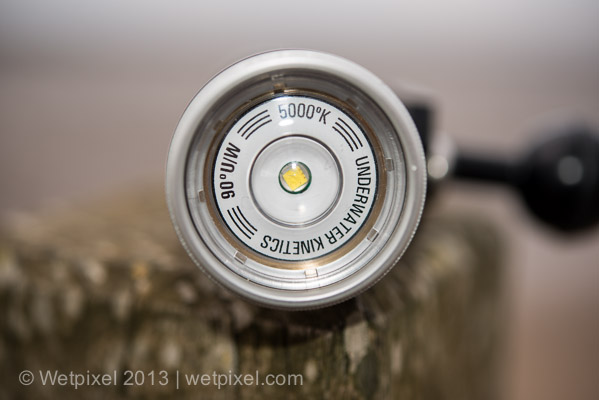
Video capture devices seem to be available in an ever-decreasing size. The ability of SLR cameras to produce very presentable video has been followed by a series of POV cams like the GoPro and Sony AS15. These are small, light, inexpensive and capable of producing very good quality footage. Hence, they have been widely adopted by many videographers. A common feature of these cams is that they have limited low-light performance and fixed wide-angle lenses.
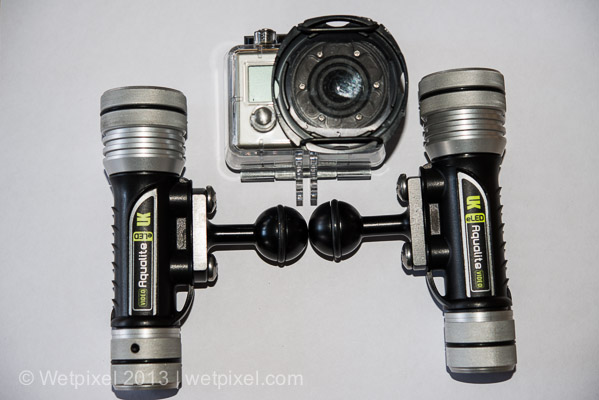
Underwater Kinetics has produced a dedicated video light with their Aqualite eLED. Powered by a Li-ion cell, this is a very small and compact light with a very competitive price point. It is supplied as standard with a charger, a spare Li-On cell and an optional 1” ball can be added (at an additional cost) which attaches via two threaded holes on the torch body. The torch is available with interchangeable 90°, 65° or 20° reflectors, with the 90° being the most suitable for video use. Apparently, the 65° is designed to match the angle of view of compact cameras like the Sealife.
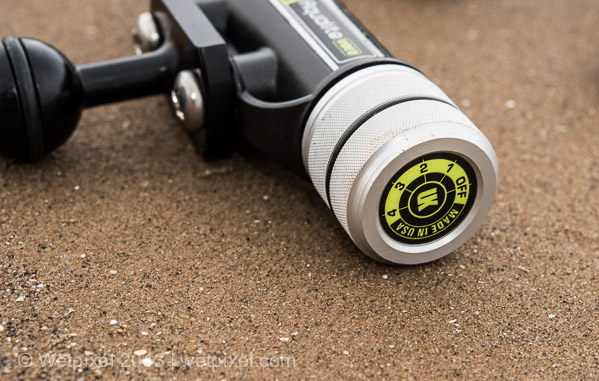
The light puts out a very credible 600 lumens of output at 5000°K, which can be controlled in 4 steps (600 to 120 lumens) via a revolving switch on the rear of the light. Burn times are also very good, with a quoted burn time of 1.3 hours. The addition of an extra battery makes for a full day’s shooting without needing to recharge.
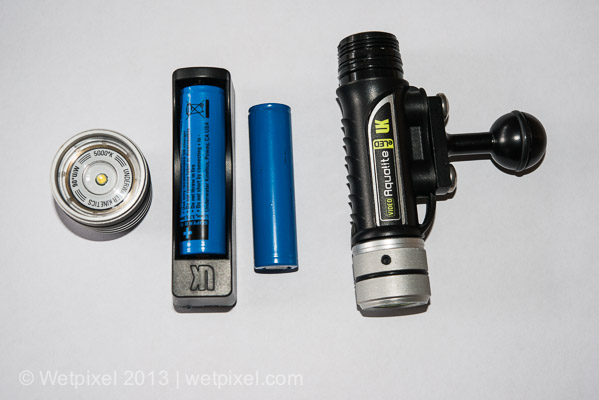
Burn testing showed the manufacturer’s burn times to be accurate, with the lights averaging around 80 minutes burn at full power.

In use, the lights are very light (200g) and only 13cm long. During testing they were almost completely neutrally buoyant when attached to my SLR housing. They seem solidly constructed, and the aluminum surround will act as a effective heat sink when the torches are used underwater.
Our test involved using a pair of Aqualites with a Nauticam housed Nikon D800 and a 16-35mm wide-angle lens behind a Zen 230mm dome (70mm extension). Also attached to the housing was a GoPro HERO2 POV cam in a Backscatter housing and attached with a ULCS GoPro cage.
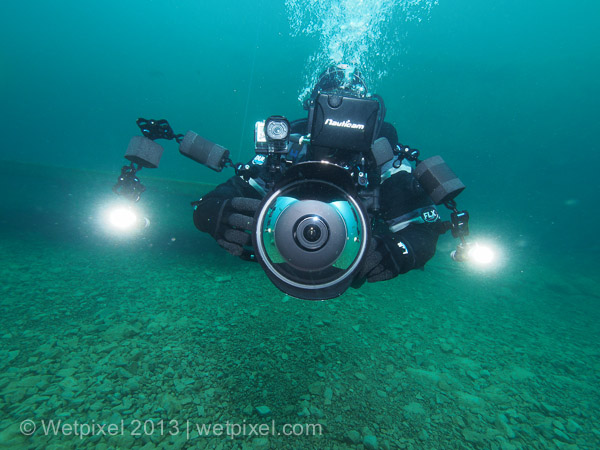
It can be argued that lighting for video (and maybe for stills too) is best when the viewer does not notice it. Light is typically used to illuminate areas of shadow and bring out underwater color. For wide-angle, videographers will normally attempt to set their cameras to expose the ambient light correctly, and use lights to gently correct the color loss due to the light’s passage through the water or areas that have been shaded.
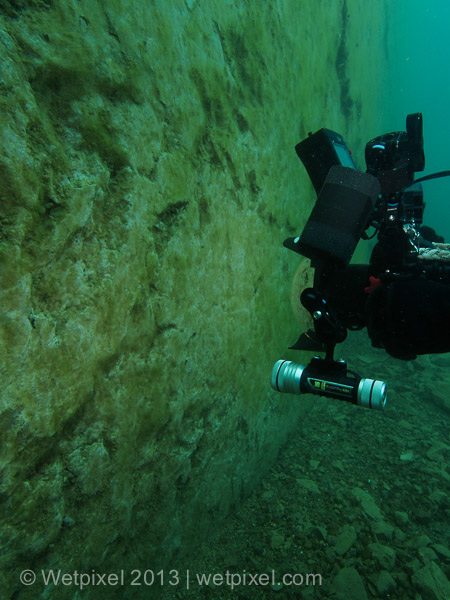
The testing took place in the green water of Capernwray, near Lancaster, UK on some fairly gloomy days. Fortunately the D800 is capable of performing well even at low light levels, so it was able to expose correctly for the conditions.
In use, it was apparent that the Aqualites were simply not powerful enough to provide adequate output for wide-angle filming with either the SLR or the GoPro. The lights’ output could be seen in reflections on fishes’ scales but did not penetrate far enough in front of the cameras to light up any elements of the scene. The color of the light was soft and the beam had no discernible hot spots.
This presents somewhat of a conundrum, as these lights are being marketed as being a suitable tool for use with POV cameras. The current versions of these cameras all feature very wide-angle fields of view and in order to light scenes with these, large output lights are required. It is somewhat ironic that in order to light a scene for a GoPro, the lights that you need may well cost 10 times the cost of the camera itself!
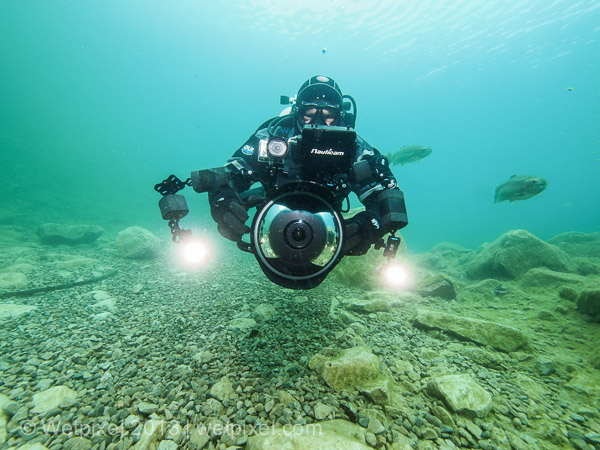
The testing did not include using the lights for shooting macro scenes, and it should be emphasized that they may be suitable for macro use. This omission was somewhat deliberate, as POV cams currently on the market cannot shoot macro, although there may well be third-party adaptors becoming available for this soon. Whilst mentioning third-party accessories for POV cams, I believe that a set of color correction filters for the camera may well be a more effective solution for correcting color issues.
I have also heard of the GoPro/Aqualite combination being effective for filming in caves, where the lack of ambient light means that the light’s output is sufficient. Given this, I would also assume that they would be suitable for filming within wreck interiors or perhaps at night.
The Aqualite eLED retails for £221.00 in the UK and $249.00 in the U.S.A.
FTCC Disclaimer:
The torches were kindly loaned to the reviewer by Underwater Kinetic’s UK distributer Sea & Sea. Thanks to Brett Thorpe of Divelife for his assistance with the review.